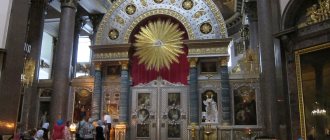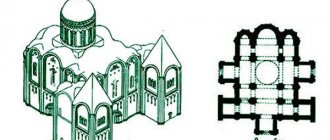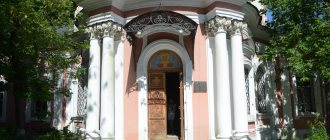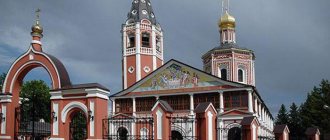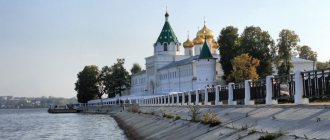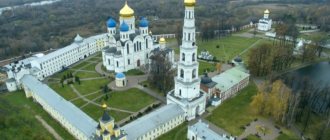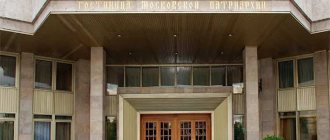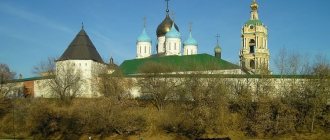St. Sophia Cathedral (Vologda), a description of which can be found in almost any publication devoted to ancient Russian architecture, saw better times in the past. Thousands of pilgrims flocked to it as the center of Orthodoxy in the Russian North, and, hearing the ringing of bells, fell on their faces. Today it is just a museum - a collection of evidence of a life that once passed.
Sovereign command
St. Sophia Cathedral in Vologda, whose history dates back to the reign of Ivan the Terrible, was founded by personal order of the Tsar in 1568. It is known from ancient chronicles that not long before this, the construction of the Vologda Kremlin began, which determined the city center by its position.
The former wooden city Cathedral of the Resurrection of the Lord, located on the so-called Lazy site - part of the ancient Vologda settlement, was beyond the limits of construction. Instead, the sovereign ordered the construction of a new stone temple and consecration of it in honor of Sophia the Wisdom of God.
Kremlin Park
To the west of the Vologda Kremlin (Bishop's Court) there is a small park called Kremlevsky. This green area is a relic of the ramparts. In summer, you can see two picturesque ponds here - the remains of a defensive moat with water, which surrounded the walls of the Kremlin in the 16th century.
Modern attractions of the Kremlin Park include:
Chapel of the 2000th anniversary of the Nativity of Christ , built in 2002
Bench “Let's sit and eat” , installed on the bank of the Vologda River in 2015. The art object is dedicated to the famous Vologda dialect.
The monument to the letter “O” is located nearby among the trees (2012).
The cathedral is the brainchild of a formidable king
Having ordered the start of construction, Ivan the Terrible also indicated a model according to which the new temple should look like. It turned out to be the Assumption Cathedral of the Moscow Kremlin. Obviously, the sovereign wanted, when arriving at his northern oprichnina residence, to have before his eyes the semblance of a capital shrine.
The Tsar attached great importance to the construction of the Kremlin, which was supposed to primarily serve as a defensive structure and personally supervised the progress of the work. He last visited the St. Sophia Cathedral (Vologda) after domes topped with crosses were raised onto its roof. And then a certain event occurred that left a very vague trace in history and gave rise to the most contradictory rumors.
Great embarrassment
It is known for certain that in 1570 the sovereign suddenly and unexpectedly left Vologda without waiting for the completion of construction, in which he had shown such active participation. After his departure, all work was abandoned, and not only the cathedral, but also the Kremlin remained unfinished for several more years.
The chronicle compiled already in 1716 by Ivan Slobodsky sheds some light on this. In it, he gives a story about how, during the tsar’s last visit to the unfinished cathedral, part of the cladding suddenly fell off the vault and, falling, hit him in the head. The autocrat remained alive, but became unusually angry.
The Emperor's Wrath
It is not difficult to imagine the horror of the Vologda governor, who was in charge of the construction and was already ready to give up his life. However, the Queen of Heaven took the trouble away from him. The Emperor, having come to his senses, ordered the dismantling of the cathedral, which was so guilty before him. They later said that he saw what happened as a bad omen for himself.
They didn’t take it apart, but, after waiting for the time until the anger subsided and the head healed, they fell before him with prayers not to waste in vain the labors of people and the funds acquired with sweat and blood. They prayed for a long time, more than a year has passed since then, but to no avail. Only during the reign of his son Fyodor Ioannovich, in 1587, was the disgraced temple finally completed and consecrated.
The troubles of subsequent years
St. Sophia Cathedral (Vologda), which began its life so unsuccessfully, suffered many troubles in subsequent years. So, during the Time of Troubles, when the city was captured by the Polish-Lithuanian occupiers, along with all sorts of criminal rabble, it was ravaged and set on fire. Everything that they could not plunder perished in the fire: the iconostasis, the roof and the domes with crosses.
Only thanks to the generosity of the first sovereign from the House of Romanov, Mikhail Fedorovich, who ascended the throne, it was possible to restore the cathedral in the shortest possible time, and in 1613, after re-consecration, it again opened its doors to honest people. It is known that in subsequent years the tsar repeatedly donated money and precious church utensils to the cathedral.
During the reign of Peter I, St. Sophia Cathedral (Vologda) burned twice. The first time God allowed disaster to happen was in 1698 - a lightning strike struck the central dome, causing the entire building to soon be engulfed in fire. The second time the misfortune happened in 1724. Whether by oversight or someone’s ill will, this time the damage was so great that it took almost twenty years to restore the temple. From those ancient times to the present day, a unique five-tiered iconostasis, made by specially commissioned Novgorod masters, has been preserved.
Sofia Square
St. Sophia Cathedral stands on the square of the same name, which is also called the Kremlin. This is the place where all city holidays take place. A Russian record was immediately set when more than 500 lacemakers from all over the world gathered in the open air and wove lace for two hours, while the sound of bobbins was in the air. But on ordinary days, especially white summer evenings, there are a lot of people here: many play frisbee, ride bicycles, couples walk nearby and children run around. I always feel here some kind of freedom and breadth of true ancient Russian cities.
As soon as you enter Sophia Square, it seems that the sky rises higher and you feel the immense space. Tourists here immediately start taking pictures, but if you line up for a memorable shot, souvenir sellers will immediately notice you and will persistently offer them to you. Decide for yourself whether to buy or not; personally, I don’t always like such active marketing.
If you also want to look at magnets and plates in a more relaxed atmosphere, you can go to the “Vologda Souvenirs” stores at the address: Kremlin Square, 8 or Chekhova, 12, as well as to “Carved Palisade” (it is located in a very cozy house; even if you don’t buy anything there, it will be interesting to just look at a typical example of Vologda architecture) at the address: Zasodimskogo, 5.
The appearance of the cathedral, preserved to this day
Additional changes in the appearance of the cathedral appeared during major renovations carried out between 1848 and 1851. In particular, stone vestibules were built - additional extensions in front of the entrances, window openings were expanded, and the roof acquired the green color characteristic of it today. Nine years later, St. Sophia Cathedral (Vologda) was surrounded by a stone wall.
In its final form, it was a five-domed temple, the main volume of which in plan is a rectangle. On the western side, three powerful apses are attached to it - semicircular projections, inside of which there are altars.
Six columns located inside the room support the roof and divide the space into three sections - nave. The height of the cathedral is fifty-eight and a half meters, and the area is nine hundred eighty-five and a half square meters. It is in this form that it can still be seen today.
Giant bell tower
Of particular interest is the bell tower of the St. Sophia Cathedral (Vologda), which has a height of seventy-eight and a half meters. It was erected in 1870 on the site of the previous low wooden bell tower, which had a hipped roof.
The initiator of the construction was Archbishop Palladius of Vologda, who wished that the new belfry would be the tallest in the diocese. The ruler’s word is the law, and the former bell tower, which had stood for more than two centuries, was demolished, leaving only its lower stone part, which became the basis of a new building that has remained unchanged to this day.
Economic Corps
If, upon entering the courtyard of the Bishop's Court, you turn right, you will see the oldest stone building of the courtyard - the Economy building with a mezzanine. Year of construction ~1659. Food, kvass and wine were stored in the cellar of the Economy building, and money, letters, wills and other important documents were stored in the mezzanine. The treasurer was located on the intermediate floors.
To the left of the Economic building is the Nameless building and the Church of the Exaltation above the Holy Gate (1687-1692).
God's temple turned museum
After the October Revolution, the cathedral remained the religious center of the city for another five years, and in 1923 it was closed. Due to its historical and artistic value, which even the owners of the new life were aware of, it was not destroyed or rebuilt, but was handed over to the local history museum.
From now on, the St. Sophia Cathedral in Vologda, photos of which are presented in the article, has turned into an exhibition dedicated to the history of religion and atheism. It is worth mentioning that a similar fate befell the famous Kazan Cathedral in Leningrad. In 1929, a Foucault pendulum was installed in the premises of the Vologda Cathedral-Museum, intended to visually prove the daily rotation of the earth. Two years later, the same exhibit appeared in another temple, turned into a museum - the Leningrad St. Isaac's Cathedral.
At present, despite all the trends of perestroika and fundamental ideological changes, the temple, abolished in the first post-revolutionary years, still remains a museum - something that Soviet Vologda used to be proud of.
St. Sophia Cathedral, whose operating hours for many decades have been determined not by the beginning and end of services, but by times convenient for excursions, is open to public viewing. Every day except Thursday from 10:00 to 17:00, and on Thursdays from 10:00 to 20:00 you can explore its main building, as well as the bell tower located next to it.
Architecture and decoration of the building
Appearance
From the outside, the temple is a rectangular or rather cubic structure, topped with five silver domes with crosses. In the middle of the central cross there is a Crucifix, and the ends of the cross are decorated with script.
Inscribed on them:
- on the vertical - “King of Glory”;
- on the horizontal ones - “IiS” and “XC”.
The white stone walls of the building are decorated with architectural elements that are consistent in style.
There are three entrances inside:
- on the north and south sides there are open portals;
- on the west side there is a large vaulted porch of the two-arch type.
Interior design
The temple space consists of three naves. Each of them has high vaults and arches. The upper part of the space has stronger illumination than the lower. This is due to the location and size of the windows located in the quadrangle and some other structural elements. Equally narrow window openings are located in two rows. Moreover, the windows of the upper tier located under the dome are smaller in height than those in the lower row.
The main thing worth visiting this place for is the 17th century frescoes and the 5-tier iconostasis.
The portals, walls and vaults, as well as the space under the dome, are almost entirely covered with frescoes. The painted surface area reaches 5,000 m2. St. Sophia Church was the first Vologda church decorated with fresco paintings.
Fresco painting
The painting, which lasted for two years, was carried out by a whole group of icon painters, led by a flag bearer.
The work was carried out in stages:
- The wet gesso base was strengthened with nails.
- The design was applied to it by scratching it on wet plaster.
- Icon painters painted the surface along the graphing lines according to their specialization.
- The wet surface was painted with glue and tempera paints.
The color scheme of the painting is dominated by warm shades:
- golden yellow;
- brown-red;
- blue;
- blue;
- greenish.
On the frescoes, in addition to saints and mere mortals, you can see landscapes, animals, and houses. The faces of the characters in the stories have emotional overtones.
Frescoes with various subjects are located in all parts of the cathedral:
- in and under domes;
- on walls and vaults;
- on arches and pillars;
- in window frames and at entrances.
All altar rooms are also decorated with paintings from top to bottom. The authors of several frescoes in the altar are Maxim the Greek and Dionisy Zobninovsky.
Thematically, a significant part of the plots are dedicated to Christ and the Virgin Mary.
Of particular note are the fresco depictions of scenes of the Last Judgment, occupying the eastern and western sides of the temple.
The composition of the St. Sophia Cathedral, dedicated to the Last Judgment, is the largest fresco on this topic in the country.
The area it occupies is almost 400 m2. This image is evidence of the high significance and status of the temple.
Cathedral iconostasis
The current iconostasis of the first half of the 18th century became the third in the history of the temple.
Poles living in Vologda took part in the creation of the iconostasis:
- monk Arseny Borshchevsky made a five-tier structure;
- master of painting Maxim Iskritsky painted most of the icons.
After the latter missed the deadline for completing the work, the remaining icons were completed by other masters.
Over the years, the icons have been “tweaked” several times. During the restoration of the temple in the Soviet period, the masters cleared the icons of layers of paint, as a result of which only the original painting remained on the iconostasis. At the same time, the azure blue background color was returned to the iconostasis.
The “body” of the iconostasis consists of four parts: northern, central, southern and royal doors. The latter were cast in the 19th century from brass (or bronze). The gates are generally silver plated, but have gilded elements.
The style of the entire structure is Baroque. The shape of the iconostasis is a kind of pyramid of 5 tiers (rows) of icons.
The icons are separated from each other:
- horizontally - with gilded belts and cornices decorated with carvings;
- vertically - gilded pilasters with flutes.
In total, the iconostasis houses 64 icons. The icons of each row form a composition on a specific theme.
The design consists of thematic tiers (listed from bottom to top):
- local;
- festive;
- Deesis;
- prophetic;
- forefathers.
The composition of the iconostasis is completed by a kind of crown - the picturesque “Crucifixion”.
Temple shrines
The main shrines of the cathedral are considered to be the three most ancient icons of the iconostasis:
- "Sophia the Wisdom of God's Word";
- "Our Lady Hodegetria";
- "All-Merciful Savior."
These icons are placed in the local row (lower tier).
The icon depicting Saint Sophia surrounded by the Mother of God, the Savior, John the Baptist and angels, is made in warm golden and red-brown tones. The composition looks festive. Sophia herself takes center stage and is depicted androgynously, with raised wings.
The icon of Sophia is intended:
- give peace and tranquility to the home;
- fill with wisdom, including promoting successful study and restoring reason to the insane;
- provide answers to questions and help resolve cases.
The Vologda icon “Hodegetria” is made in warm yellow-green and gold tones. It depicts the Mother of God with the Child holding a scroll in her left hand. The composition as a whole is oriented towards this side - the Virgin Mary holds her son with her left hand. The Virgin's right hand points to Christ.
The purpose of the icon is reflected in its name. "Hodegetria" is translated from Greek as "Guide". This icon shows the way - helps those praying and guides the lost.
The image of the All-Merciful Savior with Savvaty and Zosima Solovetsky, Dmitry Prilutsky and Korniliy Komelsky falling at his feet has a rich coloring. Gold, red and green colors predominate, but other warm shades are also present. The main purpose of the icon is to heal illnesses.
Now these shrines are kept not in the cathedral itself, but in a neighboring building - in the museum of the local Kremlin. Lists of these icons are placed in the iconostasis of the temple.
